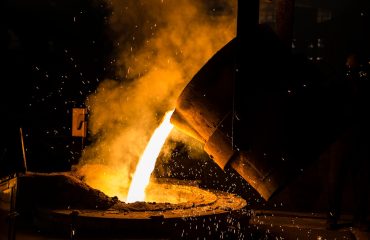Annealed wire, a marvel of metallurgical engineering, plays a crucial role in numerous industries. Its unique properties, primarily its enhanced ductility and reduced brittleness, make it an indispensable component in a wide array of applications. This post delves deep into the world of annealed wire, exploring its diverse uses and the reasons behind its widespread adoption.
1. Annealed Wire in Electrical Systems: The Backbone of Power
One of the most prominent applications of annealed wire lies in electrical systems. Its high conductivity and flexibility make it ideal for transmitting electrical power efficiently and safely. Copper and aluminum annealed wires are extensively used in power cables, wiring harnesses for automobiles, and household wiring. The annealing process significantly improves the wire’s ability to withstand bending and twisting during installation, reducing the risk of breakage and ensuring long-term reliability. The precise control over the annealing process allows manufacturers to tailor the wire’s properties to specific applications, ensuring optimal performance in various voltage and current ranges. For example, higher-grade annealed copper wire is used in high-voltage transmission lines, while lower-grade annealed copper is suitable for lower-voltage applications like household wiring.
2. Annealed Wire in Manufacturing: Precision and Strength
Beyond electrical applications, annealed wire finds extensive use in various manufacturing processes. Its enhanced ductility allows for easy shaping and forming, making it suitable for creating intricate components. In the automotive industry, annealed wire is used in the production of springs, clips, and other small parts requiring high tensile strength and fatigue resistance. The manufacturing process often involves drawing the wire through dies to achieve the desired diameter and then annealing it to relieve internal stresses and improve its formability. This precise control over the wire’s properties is crucial in ensuring consistent quality and dimensional accuracy in the final product. The ability to be easily welded and soldered also makes it an excellent choice for many manufacturing applications.
3. Annealed Wire in Springs: The Power of Flexibility
The superior ductility and elasticity of annealed wire make it exceptionally well-suited for the manufacture of springs. Various types of springs, including compression springs, extension springs, and torsion springs, utilize annealed wire as their primary material. The annealing process ensures that the wire can withstand repeated cycles of compression, extension, or torsion without losing its shape or breaking. The choice of wire material, diameter, and annealing parameters are crucial in determining the spring’s stiffness, load capacity, and fatigue life. For example, high-carbon steel annealed wire is often preferred for springs requiring high strength and durability, while other alloys might be chosen for applications requiring specific corrosion resistance or other properties.
4. Annealed Wire in Welding and Brazing: Joining Components
Annealed wire plays a significant role in welding and brazing processes. Its high ductility and ability to be easily shaped make it ideal for use as filler wire in various welding techniques such as gas metal arc welding (GMAW) and gas tungsten arc welding (GTAW). The annealing process ensures that the filler wire is easily fed into the welding gun and melts smoothly, creating a strong and reliable weld. Similarly, annealed wire is used in brazing applications to join components together using a lower-melting-point filler metal. The process requires a clean surface for effective bonding, and the ductility of annealed wire ensures proper capillary action of the filler metal, leading to strong joints.
5. Choosing the Right Annealed Wire: Material and Properties
The selection of the appropriate annealed wire depends heavily on the specific application. Several factors need to be considered, including the required tensile strength, ductility, conductivity, corrosion resistance, and temperature tolerance. Common materials used include copper, aluminum, steel (various grades), and other specialized alloys. For instance, copper annealed wire is preferred for its high conductivity in electrical applications, while stainless steel annealed wire might be necessary for applications requiring high corrosion resistance. Understanding the properties of different annealed wire types is crucial in selecting the optimal material for a given application. Manufacturers often provide detailed specifications regarding the wire’s properties, allowing engineers to make informed decisions.
In conclusion, annealed wire’s versatility stems from its unique combination of properties, making it a critical component across a vast spectrum of industries. From powering our homes to enabling intricate manufacturing processes, its importance cannot be overstated. By understanding its characteristics and applications, we can better appreciate its vital role in modern technology and everyday life.




